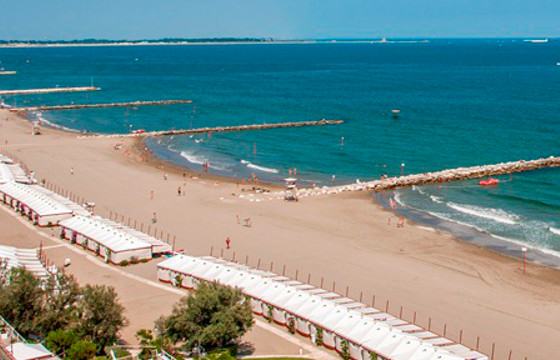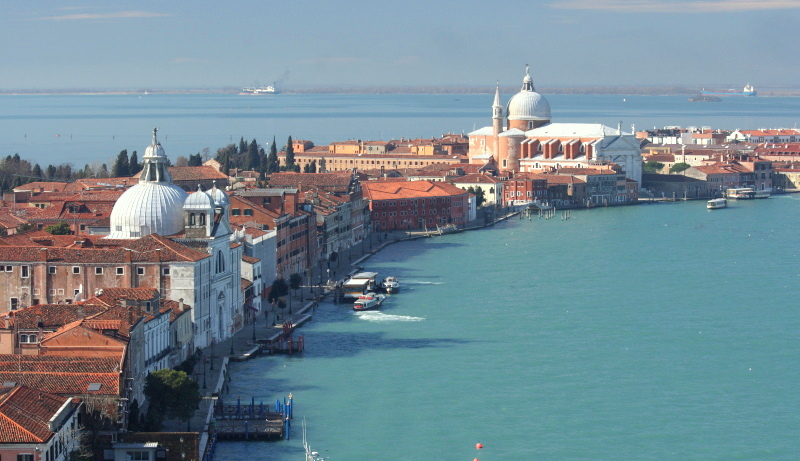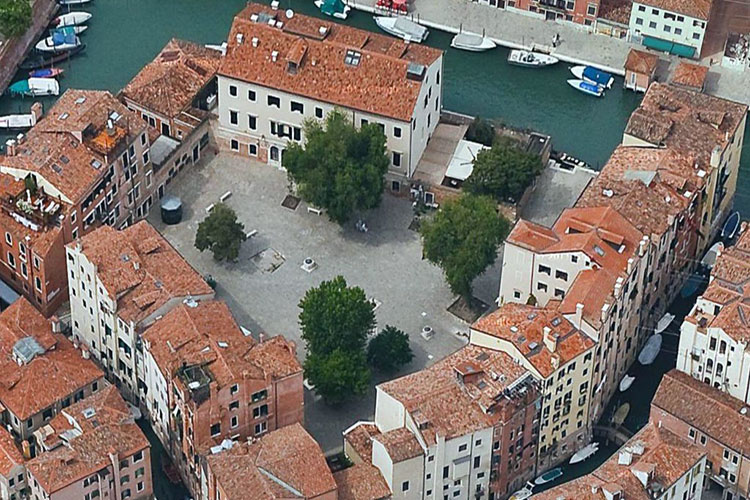Lido di Venezia

The Lido of Venice is an island that is located one kilometer away to the east of the city, and is considered to be a fraction. It is also called Island of Gold by Venetians and its inhabitants, “lidensi”. The Lido has a length of 12 km, the width of the island varies from 300 to 1000 meters. It extends between the two ports of Malamocco and the Lido thus separating Venice Lagoon from the Adriatic Sea. The Lido has about 16,500 inhabitants and its resource Renting is tourism, especially during the summer period during which thousands of tourists flock to the beautiful beaches. The name “Lido” Litus comes from the Latin meaning “coast”. The Lido in 1202 was used to house the 30,000 French crusaders waiting to set sail for the fourth crusade. In 1378-79 the Lido was fortified to protect Venice from besieging Genoa. The Lido lived the last war episode in the history of Venice: on 20 April 1797 the Commander Dominic Pizzamano made from there shoot the cannon to the French schooner “Liberateur d’Italie” that tried to enter by force in the lagoon. This event gave the pretext to Napoleon Bonaparte to declare war on Venice and end his millennial independence. Between 1816 and 1819 the Lido was a favorite of the poet Lord Byron who loved to take long rides there.
The bus stop with several piers on the Venice Lido is called Santa Maria Elisabetta. You can go to Venice Lido from Piazzale Roma or the train via the ACTV vaporetto lines 5.1 and 6 passing through the Giudecca Canal (journey time about 37 minutes, fare EUR 7.00). If you do not hurry, in one hour you can reach the pier at Venice Lido by vaporetto line 1 that passes through the Grand Canal and also stops at Rialto and San Marco. From Chioggia you reach the Lido with the line 11, which uses a combination of bus and ferry boat to cross two inlets and the Long Island Pellestrina. From Marco Polo International or from Murano to go to the Lido you can take the Red Line or Blue operated by Alilaguna. From Punta Sabbioni you get through the line 14 of ACTV. From Punta Sabbioni or Tronchetto you can reach the Lido with the ferry boat shipping company ACTV. Finally you can reach the Lido with water taxis, but this solution is the least economic. As soon as you get off at the Lido are available bus lines ABC called “Giralido” and taxis land.
From piers of Santa Maria Elisabetta you see on the left the votive temple Santa Maria della Vittoria (architect Joseph Torres, 1925). Then stops right in front stands the red church, dedicated to His Majesty Elizabeth, founded in the sixteenth century and renovated in 1620. From this point you can go to three different directions: Riviera St. Mary Elizabeth, Grand Avenue and Via Sandro Gallo. The first road runs along the lagoon to arrive (bus line) to the oldest part of Lido which is called S. Nicoletto. In front of the homonymous vaporetto stop and ferry boat is the Jewish Cemetery, Where since 1389 were buried the dead Israelite of the Venetian Ghetto. Attached to this cemetery is that of Protestant Anglicans (1684), where were buried British consuls who lived in the Serenissima in the ‘700. Over the bridge you see the Church of San Nicolo del Lido which was founded in 1043 but was rebuilt in 1626. Inside you can see a painting by Palma the Younger (“St. John”) and Palma il Vecchio (“Madonna the Cherub “). Just ahead of the church is the Nicelli, which was until 1967 the Venice airport.
In front of the water bus stops at Venice Lido begins Viale Santa Maria Elisabetta, commonly called Grand Avenue, which crosses the island to Piazzale Bucintoro and then arrives at the beach. This is the main street of Lido di Venezia (the number 6A is the Tourist Information Office, phone +39041 5265721), full of shops, pubs, bars and restaurants. Grand Avenue is crowded during the summer because many people cross the bridge on foot to go to the beaches. Piazzale Bucintoro starts left the Promenade D’Annunzio towards S. Nicoletto-Ospedale al Mare. To the right begins the Lungomare Marconi in which they are located many beach clubs and the two major hotels in Lido di Venezia, the Hotel Des Bains and the Hotel Excelsior.

The coast continues then to Alberoni, and the landscape is dominated by the Adriatic Sea and the imposing Murazzi of protective structures built at the Lido of Venice between 1716 and 1744 and designed by Vincenzo Coronelli. The embankments are nothing more than long lines of walls formed by huge blocks of stone coming from Istria. They were the first attempt to protect Lido and the Lagoon of Venice from the fury of the sea, three centuries before the building (still in progress) of MOSE. On Lungomare Marconi he had his summer home in the period 1938-2000 the Venice Casino. A little further on is the Palazzo del Cinema which houses the Lido in July, the Venice Music Awards, and in early September the famous Venice Film Festival in Venice. In Venice Lido is only a multiplex cinema Astra, Via Corfu 12, phone +39041 5265736. At the Lido’s “Alberoni”, is the Circolo Golf Venezia, in whose path are held golf competitions also at international level




